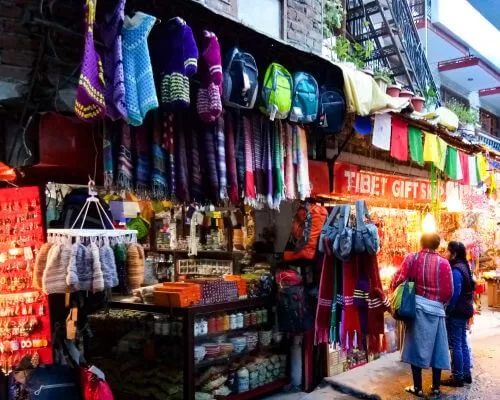Manali, a charming town nestled in the northern Indian state of Himachal Pradesh, is renowned
for its stunning landscapes, vibrant culture, and diverse flora and fauna. As a popular tourist
destination, Manali attracts millions of visitors each year, which places significant pressure on its
natural environment. Sustainable tourism is crucial for preserving Manali’s natural beauty and
ensuring that it remains a pristine destination for future generations. This in-depth article
explores the role of sustainable tourism in preserving Manali’s natural beauty, the principles
behind sustainable tourism, and actionable strategies for tourists, locals, and stakeholders.
Understanding Sustainable Tourism
Definition and Principles
Sustainable tourism is defined as tourism that takes full account of its current and future
economic, social, and environmental impacts, addressing the needs of visitors, the industry, the
environment, and host communities. Key principles include:
● Environmental Sustainability: Minimizing the negative impacts on the environment
and promoting conservation efforts.
● Economic Sustainability: Supporting the local economy and ensuring that tourism
generates long-term economic benefits.
● Socio-Cultural Sustainability: Respecting and preserving local cultures, traditions, and
communities.
Importance for Manali
Sustainable tourism is particularly important for Manali due to its fragile ecosystem, cultural
heritage, and economic dependency on tourism. By adopting sustainable practices, Manali can
protect its natural resources, support local livelihoods, and enhance the visitor experience.
Environmental Impacts of Tourism in Manali
Positive Impacts
● Conservation Efforts: Tourism revenue can fund conservation projects, such as wildlife
protection and reforestation.
● Environmental Awareness: Educating tourists about the importance of preserving
natural resources can foster a culture of environmental stewardship.
Negative Impacts
● Resource Depletion: Overuse of natural resources like water and forests can lead to
degradation.
● Pollution: Increased tourist activity generates waste, air, and noise pollution, which can
harm local ecosystems.
● Habitat Disturbance: Construction of infrastructure and tourist activities can disrupt
wildlife habitats.
Strategies for Sustainable Tourism in Manali
For Tourists
Responsible Travel Practices
● Minimize Waste: Use reusable items such as water bottles, bags, and utensils to reduce
plastic waste.
● Respect Wildlife: Maintain a safe distance from wildlife and do not disturb their natural
habitats.
● Stay on Trails: Stick to designated trails to prevent soil erosion and protect plant life.
Eco-Friendly Accommodation
● Green Hotels: Choose accommodations that implement sustainable practices such as
energy conservation, water recycling, and waste management.
● Local Homestays: Stay at local homestays that support the local economy and offer
authentic cultural experiences.
Sustainable Activities
● Eco-Trekking: Participate in guided treks that follow Leave No Trace principles.
● Cultural Tours: Engage in cultural tours that respect and promote local traditions and
heritage.
For Locals and Businesses
Sustainable Business Practices
● Eco-Friendly Operations: Implement sustainable practices such as using renewable
energy, reducing water usage, and managing waste effectively.
● Local Sourcing: Source products and services locally to support the local economy and
reduce carbon footprint.
Community Engagement
● Education and Awareness: Educate the community about the importance of sustainable
tourism and how they can contribute.
● Community Projects: Participate in or initiate community projects that promote
environmental conservation and cultural preservation.
For Government and Policy Makers
Policy and Regulation
● Environmental Regulations: Enforce regulations that protect natural resources and limit
the environmental impact of tourism.
● Incentives: Provide incentives for businesses and tourists who adopt sustainable
practices.
Infrastructure Development
● Sustainable Infrastructure: Develop infrastructure that minimizes environmental impact,
such as eco-friendly transportation and waste management systems.
● Visitor Management: Implement strategies to manage visitor numbers and reduce
pressure on popular tourist sites.
Case Studies of Successful Sustainable Tourism Initiatives
The Himalayan Orchard Huts
● Overview: An eco-friendly homestay that offers organic farming experiences and
promotes sustainable living practices.
● Impact: The initiative supports local farmers, reduces waste, and educates visitors about
sustainable agriculture.
Great Himalayan National Park Conservation Area
● Overview: A UNESCO World Heritage Site that focuses on preserving biodiversity
through sustainable tourism.
● Impact: The park implements strict visitor regulations, promotes eco-tourism activities,
and supports local communities through conservation projects.
Benefits of Sustainable Tourism
Environmental Benefits
● Biodiversity Conservation: Protects diverse ecosystems and endangered species.
● Reduced Pollution: Minimizes waste and pollution through responsible practices.
Economic Benefits
● Local Employment: Generates jobs for locals, promoting economic stability.
● Sustainable Revenue: Ensures long-term revenue from tourism without depleting
resources.
Social Benefits
● Cultural Preservation: Protects and promotes local traditions and heritage.
● Community Development: Improves the quality of life for local residents through
sustainable economic growth.
Challenges and Solutions
Challenges
● Awareness and Education: Lack of awareness about sustainable practices among
tourists and locals.
● Resource Constraints: Limited resources for implementing and maintaining sustainable
initiatives.
● Regulatory Enforcement: Difficulty in enforcing environmental regulations and
policies.
Solutions
● Awareness Campaigns: Launch campaigns to educate tourists and locals about the
benefits of sustainable tourism.
● Partnerships: Form partnerships between government, NGOs, and businesses to pool
resources and expertise.
● Monitoring and Evaluation: Regularly monitor and evaluate the effectiveness of
sustainable tourism initiatives to ensure continuous improvement.



